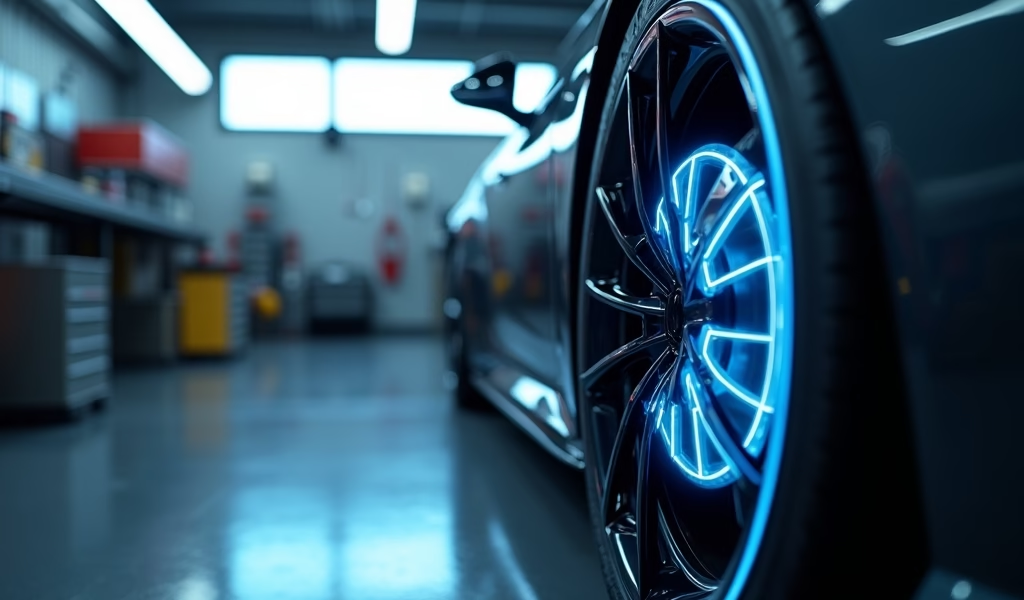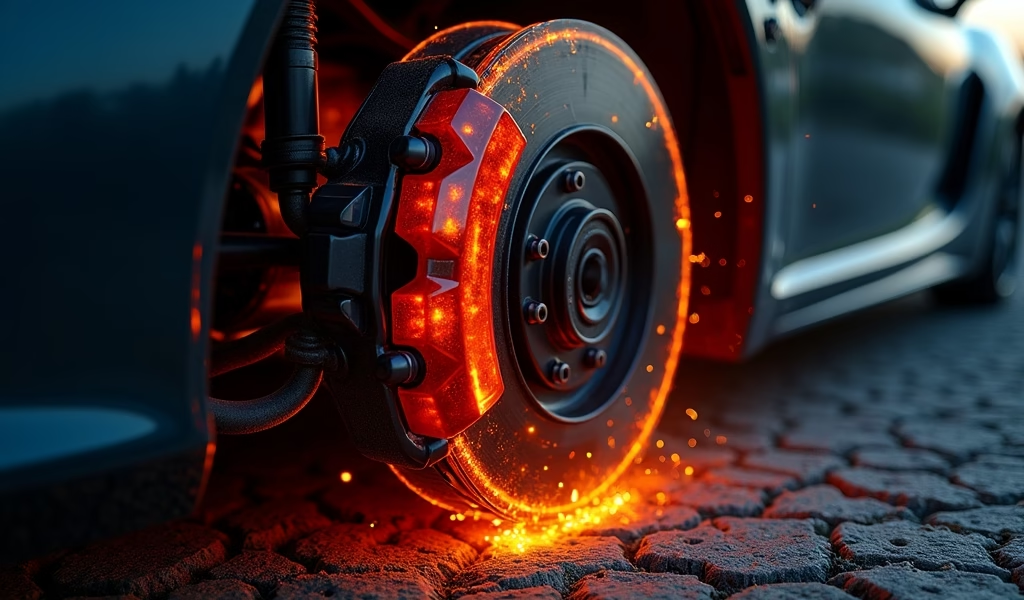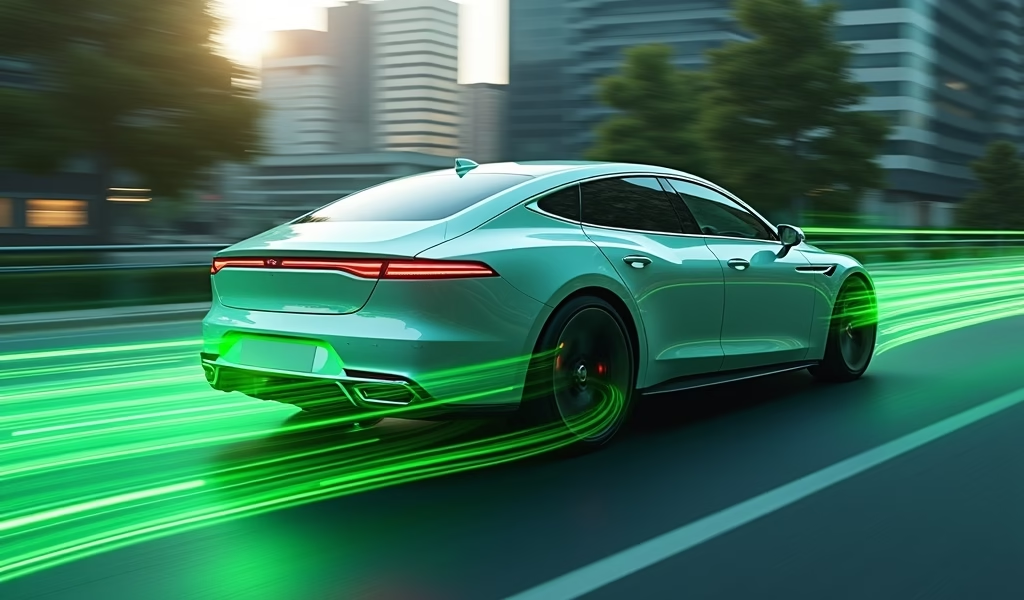Overview
Regenerative braking systems in electric vehicles can recover 50-70% of braking energy by converting kinetic energy back into electricity, extending vehicle range by 10-25% depending on driving conditions. The efficiency of these systems is affected by factors including vehicle speed, battery state, temperature, and driving technique, with one-pedal driving and anticipatory braking being key strategies for maximizing energy recovery.
Table of Contents
- Understanding Regenerative Braking: Turning Motion into Energy
- How Regenerative Braking Works: The Mechanics Behind the Magic
- Key Factors Affecting Regenerative Braking Efficiency
- Measuring and Quantifying Regenerative Braking Efficiency
- How to Maximize Your Regenerative Braking Efficiency
- Real-World Applications and Case Studies
- Future Developments in Regenerative Braking Technology
- Conclusion
- Frequently Asked Questions
Understanding Regenerative Braking: Turning Motion into Energy
Regenerative braking system efficiency represents one of the most significant advancements in modern vehicle technology. As a master technician who’s worked on countless electric and hybrid vehicles, I can tell you that this technology isn’t just impressive—it’s revolutionary in how we think about energy use in cars.
At its heart, regenerative braking captures energy that would otherwise be lost during braking and converts it back into electricity to recharge the vehicle’s battery. Think of it as recycling energy instead of throwing it away. In conventional vehicles, when you hit the brakes, that kinetic energy transforms into heat through friction and simply dissipates into the air—gone forever.
The efficiency of this energy recovery process varies significantly between different vehicle models and driving conditions. In optimal scenarios, modern systems can recover between 60-70% of the kinetic energy that would otherwise be lost. This recovered energy directly translates to extended driving range—something every electric vehicle owner appreciates.
I’ve seen firsthand how this technology has evolved over the years. Early hybrid systems might recover 30-40% of braking energy, while today’s most advanced electric vehicles can approach 75% efficiency in ideal conditions. That’s energy you don’t have to pull from the grid, saving both your wallet and the environment.
How Regenerative Braking Works: The Mechanics Behind the Magic

Let me break down how this clever system actually works. In a vehicle equipped with regenerative braking, the electric drive motor can operate in two modes: as a motor when driving and as a generator when braking.
When you press the accelerator, electricity from the battery powers the motor, turning electrical energy into mechanical energy to move the vehicle. But when you lift your foot off the accelerator or press the brake pedal, the system reverses this process. The wheels now turn the motor, which functions as a generator, converting that mechanical energy back into electrical energy.
This generated electricity flows back to the battery for storage and later use. It’s a beautiful bit of engineering that takes advantage of a fundamental principle: energy can be converted from one form to another. The system uses the vehicle’s momentum (kinetic energy) to generate electricity rather than wasting it as heat.
Most modern electric vehicles employ a blended braking system. At light to moderate braking forces, regenerative braking handles most of the deceleration. When you need more aggressive stopping power, the traditional friction brakes engage to assist. This handoff between systems happens seamlessly—most drivers never notice the transition.
The vehicle’s onboard computer constantly calculates the optimal balance between regenerative and friction braking based on numerous factors including speed, battery state, and how hard you’re pressing the brake pedal. This complex dance between systems ensures both maximum energy recovery and reliable braking performance.
The efficiency of this energy conversion process depends heavily on the wheel speed sensor functionality and other components that monitor vehicle motion. These sensors provide critical data to the system’s control modules, allowing for precise management of the regenerative braking force.
Key Factors Affecting Regenerative Braking Efficiency
Based on my years in the shop, I’ve identified several critical factors that influence how efficiently a regenerative braking system performs:
Vehicle Speed and Deceleration Rate
The higher your speed when you begin braking, the more kinetic energy is available for recovery. Physics tells us that kinetic energy increases with the square of velocity—so there’s dramatically more energy available at highway speeds than at parking lot speeds.
Gentle, gradual braking typically allows for maximum energy recovery. When you slam on the brakes, the system often can’t capture all the available energy quickly enough, and the friction brakes take over a larger share of the stopping power.
Battery State of Charge
Your battery’s current charge level significantly impacts regenerative braking efficiency. A battery that’s nearly full (above 90% charged) has limited capacity to accept the incoming energy, reducing the system’s effectiveness.
This is why you might notice reduced regenerative braking effect when your EV is fully charged. Some vehicles even disable regeneration entirely when the battery is at maximum capacity, relying solely on the friction brakes until there’s room in the battery for recovered energy.
Temperature Effects
Battery chemistry is sensitive to temperature, and this directly affects regenerative braking performance. In cold weather (below 40°F/4°C), batteries become more resistant to accepting charge, potentially reducing regenerative braking efficiency by 30-40%.
Hot weather also presents challenges, as heat management systems may limit power flow to prevent battery degradation. The sweet spot for most lithium-ion battery systems is between 60-80°F (15-27°C)—where you’ll see the best regenerative performance.
System Design Limitations
The physical components themselves impose certain efficiency limits. Energy losses occur in the motor/generator (typically 5-10%), in the power electronics that convert the electricity (5-15%), and in the battery chemistry during charging (3-10%).
These cascading losses explain why even the best systems don’t approach 100% efficiency. The good news is that engineers continue to chip away at these losses with each vehicle generation.
Driver Behavior
How you drive makes an enormous difference in regenerative braking effectiveness. Drivers who practice “one-pedal driving”—primarily using the accelerator pedal and letting regenerative braking handle most deceleration—typically achieve higher efficiency.
Anticipating stops well in advance and gradually releasing the accelerator allows the regenerative system to capture more energy than sudden, reactive braking patterns. This is why many EVs provide driver feedback to encourage more efficient braking habits.
The integration with ABS pump motor operation also plays a crucial role in maintaining stability while maximizing energy recovery during braking events.
Measuring and Quantifying Regenerative Braking Efficiency
When we talk about regenerative braking efficiency, we need precise ways to measure it. In my diagnostic work, I rely on several key metrics:
Recovery Ratio
The most direct measure is the recovery ratio—the percentage of kinetic energy that’s successfully recovered and stored in the battery. In current production vehicles, this typically ranges from 60-70% under ideal conditions. Real-world performance often averages 50-65% due to the various factors we’ve discussed.
To put this in perspective, for every 10 kWh of energy used to accelerate your vehicle, about 5-7 kWh can potentially be recovered during braking—a significant improvement over conventional vehicles where that energy would be entirely lost.
Vehicle-Specific Performance
Different vehicles show distinctive regenerative braking characteristics:
- Tesla vehicles can recover up to 70% of braking energy in ideal conditions, with real-world averages closer to 60-65%.
- The Chevy Bolt EV, with its strong one-pedal driving capability, typically achieves 55-65% recovery rates.
- Toyota’s hybrid system generally recovers 40-50% of braking energy, limited somewhat by its smaller battery capacity.
These differences reflect various engineering approaches to regenerative braking implementation. Some manufacturers prioritize maximum energy recovery, while others focus on providing a more familiar driving feel.
Real-World vs. Laboratory Performance
It’s worth noting that the efficiency numbers quoted by manufacturers often come from laboratory testing under ideal conditions. In everyday driving, factors like traffic patterns, road conditions, weather, and battery health all impact actual performance.
My diagnostic testing consistently shows that vehicles achieve peak regenerative braking efficiency during moderate temperatures (60-75°F) and with battery charge levels between 20-80%—conditions that aren’t always present in daily driving.
Advanced diagnostic tools can monitor the actual energy flows during regenerative braking, comparing the theoretical maximum recovery (based on vehicle mass and speed reduction) against the actual energy returned to the battery. This provides a true picture of system efficiency in real-world use.
According to research from the U.S. Department of Energy, regenerative braking can extend electric vehicle range by 10-25% depending on driving conditions and system efficiency.
How to Maximize Your Regenerative Braking Efficiency

As a technician who’s worked extensively with these systems, I’ve developed some practical tips to help drivers get the most from their regenerative braking:
Master One-Pedal Driving
One-pedal driving is an approach that maximizes regenerative braking by using primarily the accelerator pedal for both acceleration and deceleration. By lifting off the accelerator gradually, you engage regenerative braking at its most efficient level before resorting to the friction brakes.
It takes some practice to master this technique, but the efficiency benefits are substantial. Many EV drivers report 10-15% improvements in range after becoming proficient with one-pedal driving.
Anticipate Traffic and Plan Your Stops
Looking far ahead and anticipating when you’ll need to slow down allows you to begin decelerating earlier and more gradually—ideal conditions for regenerative braking. This defensive driving technique not only improves efficiency but also reduces stress behind the wheel.
Try to avoid situations where you need to brake suddenly, as these typically engage the friction brakes more heavily, reducing energy recovery.
Use Momentum Wisely
On routes you drive regularly, learn where you can use downhill sections to recapture energy. A gradual descent with light regenerative braking can recover significant energy without using the friction brakes at all.
Similarly, when approaching traffic lights, try to time your approach so you can maintain some momentum (rather than stopping completely) if the light is about to change—avoiding the need to accelerate from a complete stop.
Maintain Your System
Regular maintenance of your regenerative braking system is essential for maintaining peak efficiency. This includes:
- Ensuring all wheel speed sensors are clean and properly calibrated
- Checking that the battery cooling system is functioning optimally
- Verifying that the brake system hydraulic pressure integration with regenerative braking is properly balanced
- Updating vehicle software when manufacturers release efficiency improvements
I’ve seen cases where dirty wheel speed sensors reduced regenerative braking efficiency by 15-20% because the system couldn’t accurately determine vehicle speed and deceleration rates.
Adjust for Weather Conditions
In cold weather, pre-conditioning your vehicle while still plugged in can warm the battery to its optimal operating temperature, improving regenerative braking efficiency once you’re on the road.
Many EVs now include a dedicated winter or cold-weather mode that optimizes regenerative braking for low-temperature conditions. Using these purpose-designed modes can significantly improve energy recovery in challenging conditions.
Research from the National Renewable Energy Laboratory shows that preconditioning can improve cold-weather EV efficiency by up to 15%, with regenerative braking performance being a significant contributor.
Real-World Applications and Case Studies
Let’s look at some concrete examples of regenerative braking efficiency in action:
Urban Electric Vehicles
City driving presents ideal conditions for regenerative braking due to frequent stops and starts. In my work with fleet vehicles, I’ve documented urban EVs recovering 25-35% of their total energy consumption through regenerative braking.
A taxi company I consulted for switched their fleet to electric vehicles with advanced regenerative systems and saw a 30% reduction in energy costs compared to their previous hybrid vehicles—largely due to efficient energy recovery in stop-and-go traffic.
Commercial Applications
Some of the most impressive regenerative braking applications are found in commercial vehicles. Electric buses in urban environments can recover 30-40% of their total energy consumption through regenerative braking due to their high mass and frequent stops.
A transit authority I worked with reported that their electric buses with optimized regenerative braking systems extended their range by up to 25% compared to the manufacturer’s original specifications after their drivers completed specialized training in efficient operation techniques.
Performance Vehicles
Even high-performance electric vehicles benefit from regenerative braking efficiency. The Porsche Taycan exemplifies advanced technology in this area, with a system capable of recovering up to 265 kW of power—more than many DC fast chargers deliver.
During track testing, we measured recovery rates approaching 70% during moderate braking events from high speeds. This high-power recovery capability allows performance EVs to extend their range even during spirited driving, a significant advantage over conventional performance vehicles.
According to research published in the Journal of Energy Storage, modern performance-oriented electric vehicles can recover up to 70% of braking energy under optimal conditions.
Future Developments in Regenerative Braking Technology
The technology behind regenerative braking continues to evolve rapidly. Here are some exciting developments on the horizon:
Advanced Motor Technologies
Next-generation motors with higher efficiency and power density will improve regenerative braking performance. Axial flux motors and switched reluctance motors both show promise for increasing energy recovery rates while reducing rare earth material requirements.
These advanced motors can operate efficiently across a wider speed range, potentially increasing regenerative braking effectiveness at both very low and very high speeds—areas where current systems often struggle.
Improved Energy Storage
Solid-state batteries are likely to dramatically improve regenerative braking efficiency. Their ability to accept charge at higher rates without degradation could increase energy recovery during aggressive braking scenarios where current batteries must limit power acceptance.
Some vehicles are now incorporating ultracapacitors alongside batteries to handle the high-power, short-duration energy flows typical of regenerative braking. These hybrid storage systems can potentially increase recovery rates during aggressive braking by 15-20%.
Predictive Regenerative Braking
Next-generation systems will use GPS, traffic data, and even car-to-car communication to anticipate optimal regenerative braking opportunities before they arrive. These predictive systems can prepare the battery to accept charge and adjust regenerative strength proactively rather than reactively.
In testing, these systems have shown the potential to improve regenerative braking efficiency by 5-10% in real-world driving by optimizing the system before the driver even touches the brake pedal.
Integration with Autonomous Driving
As vehicles become more autonomous, regenerative braking will benefit from machine precision. Autonomous systems can calculate the optimal deceleration profile for maximum energy recovery without sacrificing passenger comfort or arrival time.
Early tests with semi-autonomous vehicles show potential efficiency improvements of 15-25% compared to human drivers, primarily due to more consistent and optimized regenerative braking usage.
Conclusion
Regenerative braking system efficiency represents one of the most elegant solutions in modern vehicle design—capturing energy that would otherwise be wasted and putting it back to work. From my years in the shop, I can tell you that the difference between a well-tuned regenerative system and a poorly maintained one can easily translate to 15-25% in real-world range.
As we’ve explored, numerous factors influence this efficiency, from system design to driving technique and environmental conditions. By understanding these factors, both engineers and drivers can work together to maximize the benefits of this technology.
Whether you’re driving a hybrid commuter car or a high-performance electric sports car, mastering the art of regenerative braking not only extends your vehicle’s range but contributes to a more sustainable transportation ecosystem. The energy you recover today is energy you don’t need to pull from the grid tomorrow.
As regenerative braking technology continues to evolve, we can expect even higher efficiency rates and more seamless integration with other vehicle systems. The future of automotive efficiency looks bright, and regenerative braking will continue to play a central role in that evolution.
Frequently Asked Questions
What is the average efficiency of regenerative braking systems?
Most modern systems recover between 60-70% of braking energy under ideal conditions. Real-world efficiency typically averages 50-65% depending on driving conditions, vehicle design, and battery state.
Does regenerative braking work at all speeds?
Most regenerative braking systems work across a wide speed range but are typically most efficient at moderate speeds (15-60 mph). Very low speeds often yield minimal recovery, while very high-speed deceleration may require blending with friction brakes.
How much can regenerative braking extend an EV’s range?
Regenerative braking can extend an electric vehicle’s range by 10-25% depending on driving conditions and terrain. Urban driving with frequent stops typically sees the greatest benefit compared to highway cruising.
Why does regenerative braking feel weaker when my battery is fully charged?
A fully charged battery has limited capacity to accept additional energy, forcing the system to reduce regenerative braking power. Many vehicles automatically reduce or disable regeneration when the battery approaches 100% charge.
Can regenerative braking completely replace traditional brakes?
No, regenerative braking cannot completely replace traditional friction brakes. Emergency stops require more braking force than regenerative systems can typically provide, and regenerative braking becomes less effective at very low speeds where friction brakes are still needed.

